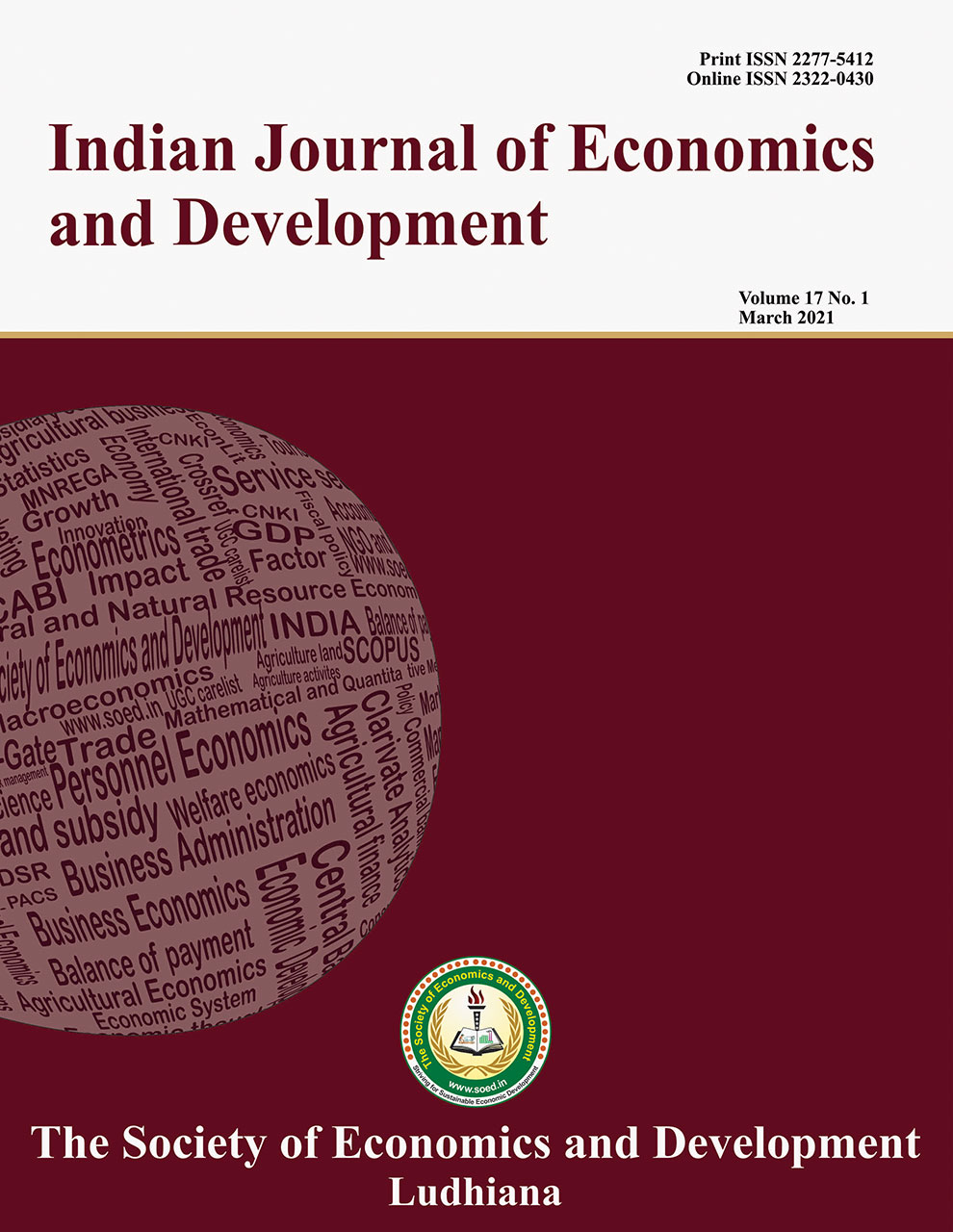An Economic Analysis of Mentha Cultivation in Punjab

Price: ₹ 500
Author: Dipanshi Agarwal, J.M. Singh and Aniketa Horo
Author Address: Department of Economics and Sociology, Punjab Agricultural University, Ludhiana-141004 (Punjab)
Keywords: B: C ratio, costs, mentha, returns.
JEL Codes: C20, D61, Q12.
Abstract
The present study was conducted for economic analysis on mentha cultivation in Punjab. The primary data were collected from fifty farmer respondents classified based on operational landholding. Cobb-Douglas production function was fitted to identify the variables influencing the yield of the mentha crop. The benefit-cost ratio was estimated to be 2.87, which highlights the profitability of the mentha crop. The major cost components of mentha cultivation were found to be human labour (39.04 per cent), followed by fertilizers (20.65 per cent) and suckers (11.82 per cent). Most farmers were growing the varieties of mentha, peppermint and koshi, a larger area devoted to the former. The highest returns over variable cost were observed in the case of large farms (`139852 per ha), followed by medium farms (`106083 per ha) and small farms (`57371 per ha). In the present study, area (ha), irrigation ( hours), and insecticide sprays (numbers) were found to be significantly affecting the yield of the mentha crop by 82 per cent.
Description
Indian Journal of Economics and Development
Volume 18 No. 2, 2022, 501-506
DOI: https://doi.org/10.35716/IJED/22013
NAAS Score: 5.15 (2022)
Indexed in Clarivate Analytics (ESCI) of WoS
Indexed in Scopus (SJR: 0.18)
UGC Approved (UGC-Care List Group II)



